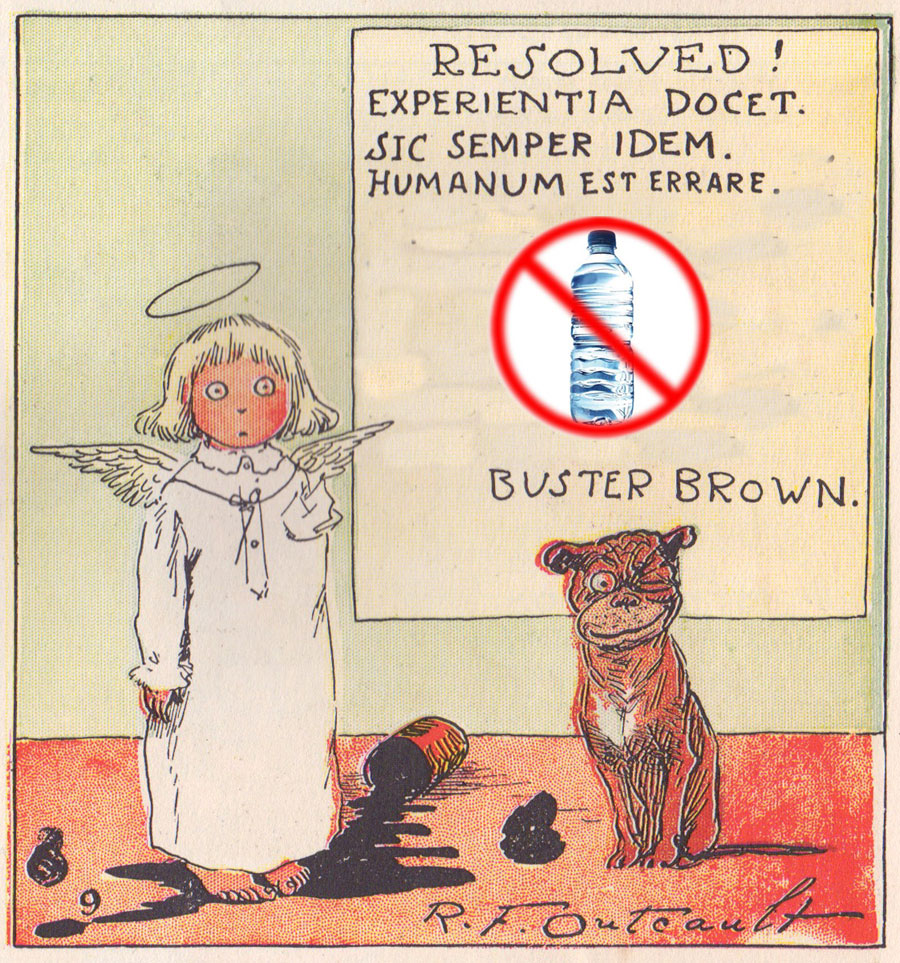A Why and How-to Primer on Drinking Tap Water in 2018
 The start of a new year is a good time to make resolutions. With this in mind, we here at GoGreen would like to offer up a resolution each month, with our first resolution of 2018 as follows: please consider making bottled water part of your personal past, and instead, make a personal pledge to drink NYC tap water in 2018. Why? Read on!
The start of a new year is a good time to make resolutions. With this in mind, we here at GoGreen would like to offer up a resolution each month, with our first resolution of 2018 as follows: please consider making bottled water part of your personal past, and instead, make a personal pledge to drink NYC tap water in 2018. Why? Read on!
Among the many ecocidal behaviors that we city dwellers engage in, perhaps none is as starkly stupefying as our collective reliance on bottled water.
Bottled water is big business in New York City. By the numbers: in 2016, bottled water surpassed soda to become the city’s best-selling beverage, with a 500 ml plastic container of Poland Spring brand bottled water becoming the city’s single most-scanned commodity by barcode, according to the company. New Yorkers purchased a collective 1 billion bottles of water in 2016, spending an average of over $500 per person per year to slake their thirst for convenience, in the process making our city the largest unified market for bottled water in the country.
This behavior, of course, has profound and lasting effects of our environment. Consider that 2017 was a record-breaking year for the plastic bottle industry, with the United States alone accounting for some 50 billion bottles manufactured, or roughly 1 million bottles per minute, round the clock, 365 days a year. Of these 50 billion bottles — which, may we point out, take 450 years to decompose — 23% may make it to a recycling facility, by the most generous estimates. That leaves some 38 billion bottles headed straight for landfills or more likely, the streets of our city and oceans beyond.
This orgy of bottled water cascading through the bodegas and office lounges of our five boroughs has another hidden cost: the social cost on the rural villages and townships that supply this water. (You didn’t think it just magically appeared in NYC, did you?)
Again, let’s take New York City’s best selling bottled water, Poland Spring. A subsidiary of the world’s largest food corporation, Nestlé, Poland Spring has negotiated contracts with a half-dozen rural Maine towns to extract water in bulk, to slake the collective thirsts of largely urban-dwelling consumers up and down the East coast. With modest-yet-locally-significant injections of cash in small rural towns (Nestlé is one of the larger public funders in hamlets such as my hometown of Denmark, ME, where it pays for libraries, fire-engines, and the annual 4th of July fireworks display), and by making promises of much-wanted local jobs, Nestlé has made great inroads into areas of weak resource laws, securing for itself long-term water-pumping contracts wherein it pays nothing for raw materials (water), and offers little in return. Ironically, the nominal Poland Spring was pumped dry over half a century ago, and in fact the company now faces legal challenges over its very claim of “Natural Spring Water.”
It all adds up to one questionable commodity, reliant on weak laws in depressed economies and an all-too-common alloy of public laziness and ignorance, in order to manifest a wasteful plan for putting ‘convenient’ water in New Yorkers’ hands.
…Which, let’s be clear, makes no sense!
The thing is, New York City is a paramount example of that great experiment known as Socialized American Municipal Water. Fresh, clean, and competently regulated, New York municipal tap-water regularly out-performs bottled water in taste, cleanliness, and — most importantly — price: The water, from your NYC faucet, is approximately 1,423.5% cheaper than your average 500 ML Poland Spring bodega bottle.
And lastly: NYC municipal water is the most convenient water in the city, because our laws require it to be so!
So, on the one hand we have a massively polluting product – one that is demonstrably unsafe, when you consider plastic pollutants like BPA and BHFP — that costs more than 1000 times as much as the alternative, which is free, ubiquitous, safe, and provided as a human right to anyone lucky enough to live here.

Which brings us back to our resolution: Drinking bottled water is a unfortunate habit of convenience. Fortunately, the behavioral changes necessary to change this habit are minimal. In fact, there is really only one: You’ll need to dedicate yourself to carrying around a water bottle. Good thing the city provides them for free! And if you are at all dubious about the quality of your tap water, get it tested — again, for free, courtesy of your fine city. Still worried? Try this!
But at any rate, lets try. Get yourself a water bottle, and make the pledge to drink tap water in 2018. This is one of those behavioral changes that really is that easy: Do it, and it will be done.
Be the change. Go Green!



